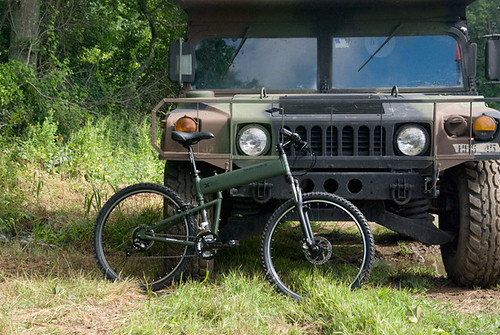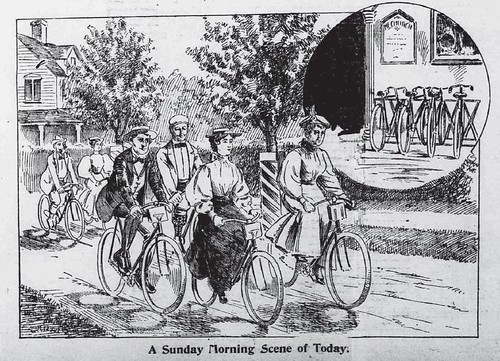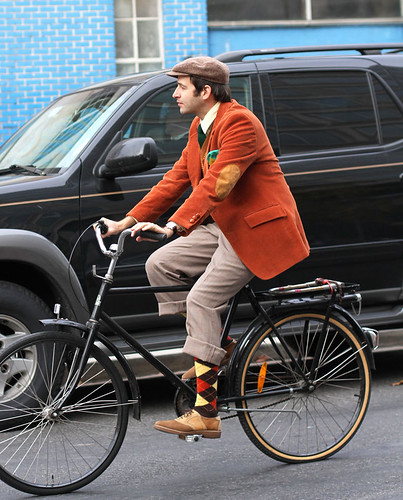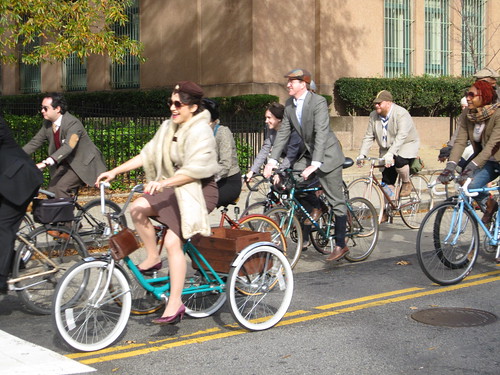 Just Ride: A Radically Practical Guide to Riding Your Bike
Just Ride: A Radically Practical Guide to Riding Your Bike by
Grant Petersen
My rating:
3 of 5 stars
Typically a non-fiction book review looks at the intended audience for a book, assesses the author's credentials, and describes what the book set out to do and how well it accomplished that, among other things. However I am feeling lazy and would prefer to just nitpick. My overall reaction to this book? I was disappointed.
* Grant has an introduction where he explains a little about who he is, but the impression I have is that he assumes that if you are reading his book that you
know who he is. In certain circles, sure, he's well known, but this is a small circle of people I tend to think among those who are interested in steel frame road or touring bikes - and who probably already know his views (some of them, anyway) and agree with them. His goal, however, is to dispel some widely held views about road cycling that he feels come from the professional cycle racing world and I don't think most of the people of that ilk have heard of Rivendell Bicycle Works or Grant Petersen. (I believe since I have been riding bikes around the DC area for the last dozen years or so I have seen all of three Rivendells.) Anyway, the book would probably work better for many readers if there was more context by providing more of Grant's story and that of his company.
* The "radical" part of this "radically practical guide to riding your bike" is that he disagrees with many commonly held views, but he is then fairly insistent that
his views are correct, which in some cases seems a little silly. Really, there is a right view on what to wear when riding a bike? A truly radical view, in my thinking, would be that whatever seems to work for you and your common sense would likely be OK. Occasionally that is Grant's advice, but not often enough.
* Certain statements are repeated several times, but repetition does not equal truth. The suggestion is that carbon fiber forks are dangerous, that they fail precipitously, and anyone other than a professional road bike racer who would own a bike with a carbon fiber fork instead of a steel one is sacrificing safety for trendiness. A single scratch could result in failure, after all! I don't doubt that Grant has seen some amazing failures and in fact I have seen photos of such things on the Internet but this country is covered with tort lawyers and I'm thinking if this was that serious a problem, we'd hear more about it.
* Uh, who was this book intended for? This was not published by Velo Press but by Workman, hardly a cycling specialist publisher, so presumably they were hoping to have reasonably broad sales, not just hard core cyclists. My own public library system, for example, bought six copies, so apparently the review version got good write ups in review tools that public library types use to assess what to acquire. Really though, this book would not be very useful for most public library patrons or other entry-level cyclists; it is more for those who think (actually, are sure) they know something and Grant is going to fix their misapprehensions. In other words, this is not a comprehensive introduction "practical guide to riding your bike" but rather the corrections to that sort of book - which means it can clock in at 200 pages and not 400-plus.
* Gee, it's kind of choppy - I mean, 90 "chapters"? (The 89 chapters are grouped into eight subject-orients parts, such as "upkeep" and "velosophy.") Well, this turns out to be because he cribbed them from himself, from Rivendell's web site (
http://www.rivbike.com/kb_results.asp... has some examples) and from their in-house publication known as the Rivendell Reader, some of which is available online, such as this (
https://docs.google.com/open?id=0Bzeh...). One oddity is that the Rivendell Reader versions (of the same thing) usually have better illustrations than the book - overall the illustrations in "Just Ride" are not numerous or particularly helpful - the illustration that goes with "frame arithmetic" for example is too small and has an error - bottom bracket height is not distinguished from bottom bracket drop; also, what is shown as "chain stay" should be labeled "chain stay length." (Of course, if you already know all this stuff, the illustration is fine, but again - who is the book for?)
Perhaps most interesting to me is that Grant seems to suggest that he really thinks inexpensive cycling solutions are a great thing - for example, using some duct tape to make an impromptu mud-flap for a bike fender. If you look at RivBike.com, however, you soon discover that most of his customers are living in a different universe, since most of what he sells is pretty pricey - good stuff? Yes, but not inexpensive. In the section on bike weight, he reveals further where he is coming from when he characterizes a "more useful, and more all-around durable steel bike costing between $2,500 and $4,500" as having a "typical, early-twenty-first-century price" for an "'enthusiast level' bicycle." Really, the entry point for an enthusiast steel bike is two-and-half
thousand dollars? Yes, at Rivendell Bicycle Works. On the other hand, in the book he says a $50 dollar bottom bracket is perfectly fine and his own store has one for $40.
* My suggestion is to just skip part 4, on "health and fitness."
View all my reviews










